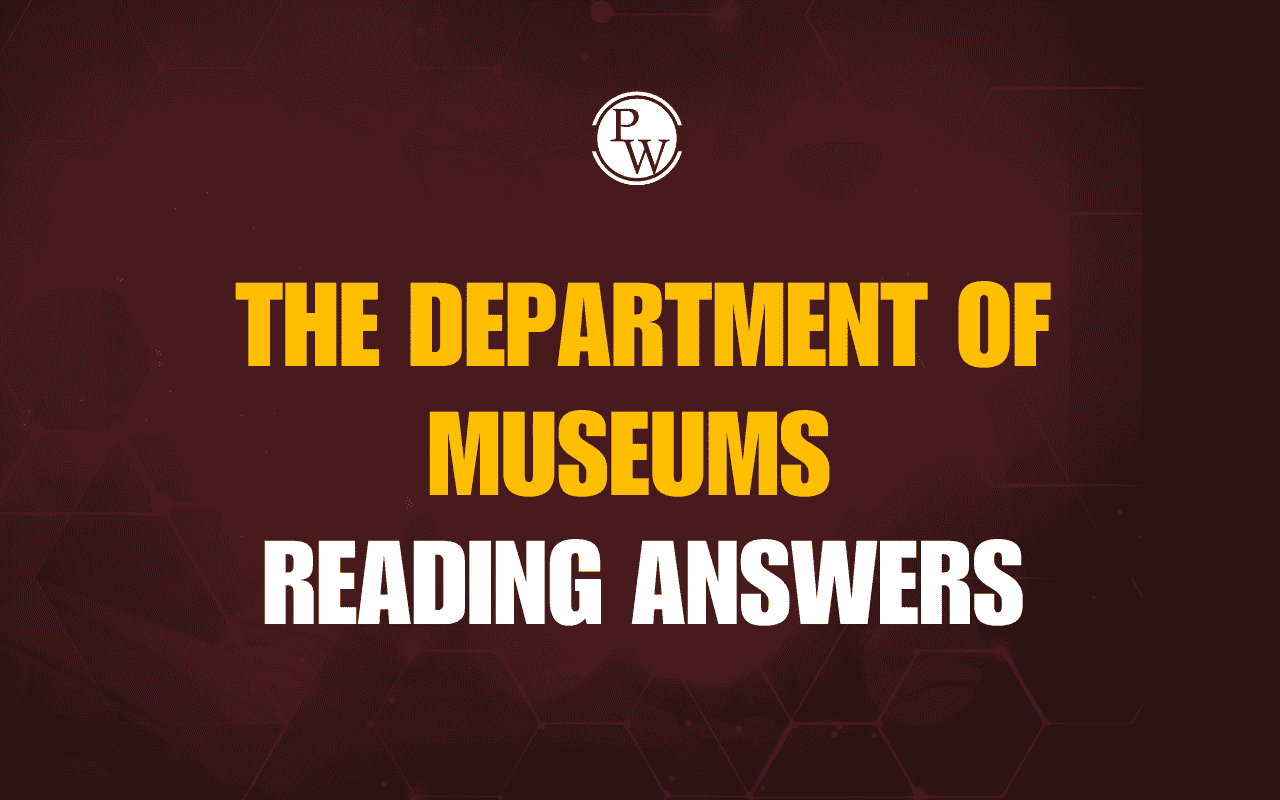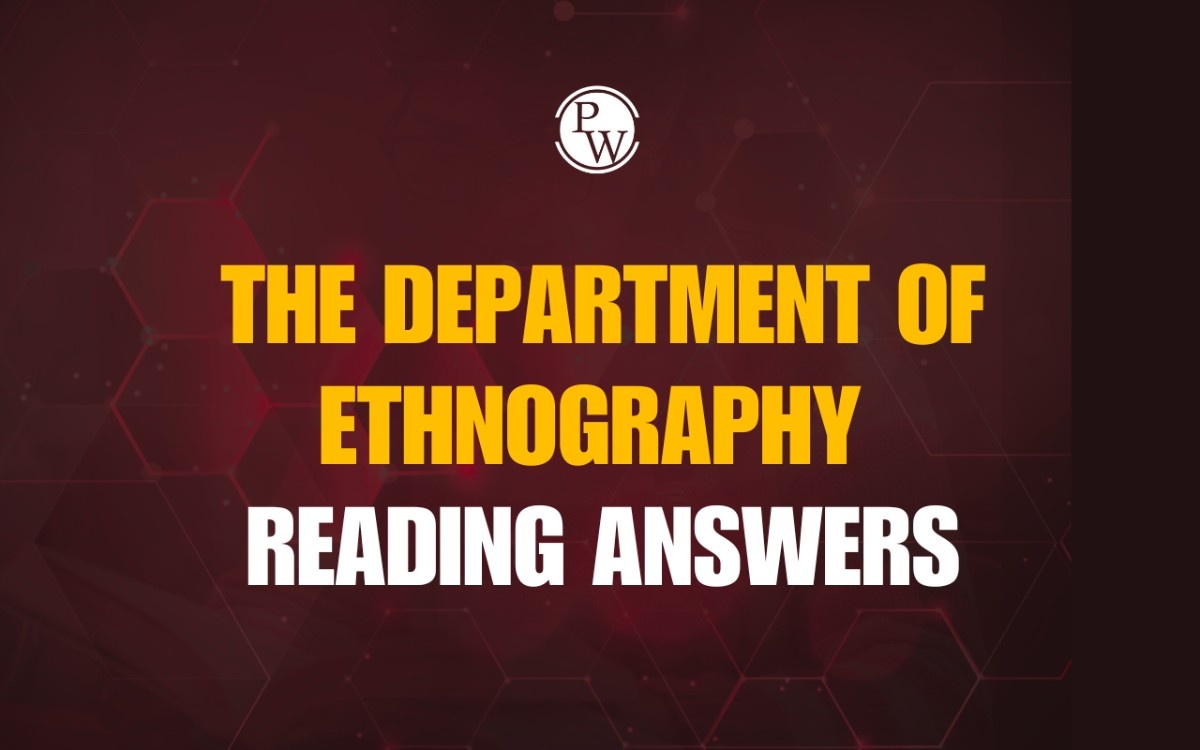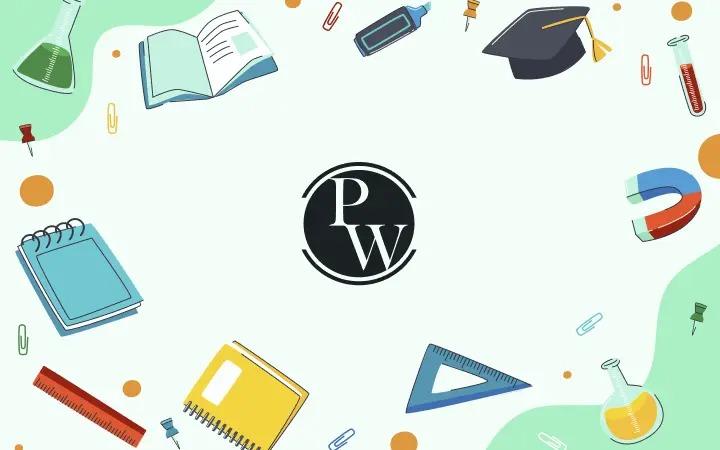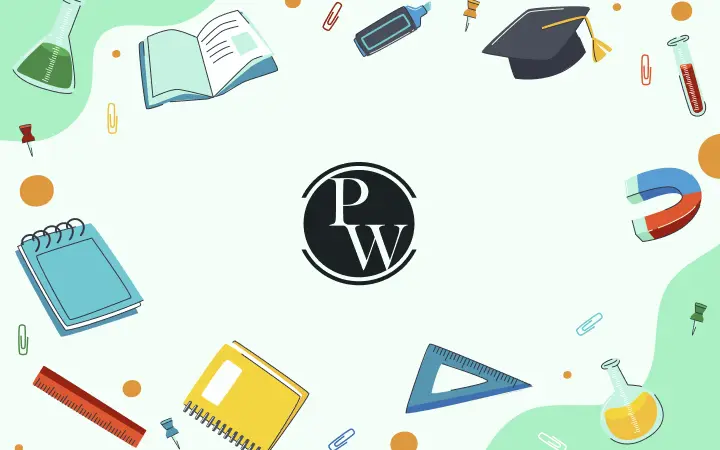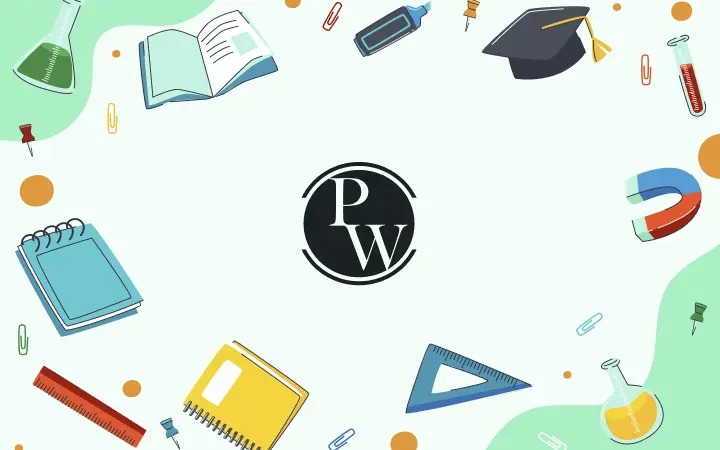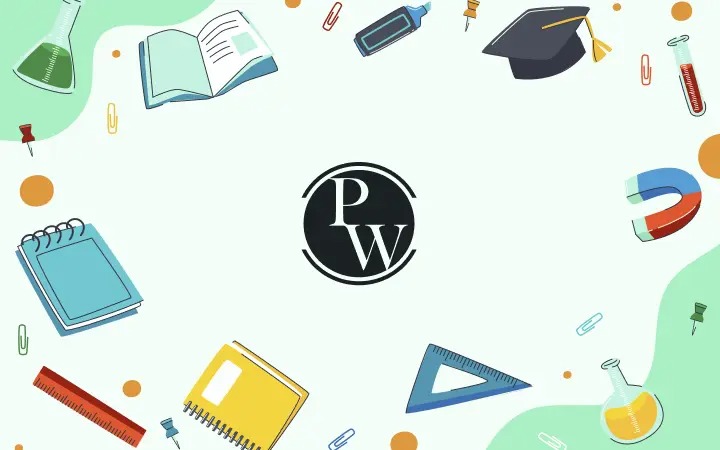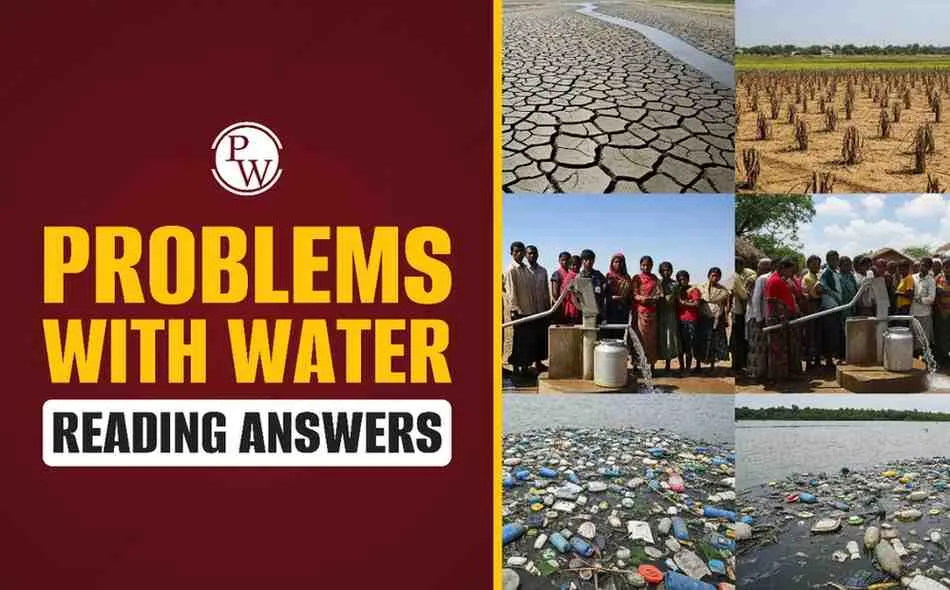
Problems With Water Reading Answers: Problems With Water is a typical IELTS Academic Reading passage focusing on global water scarcity, future risks of water conflict, development goals, and the debate between environmental sustainability and infrastructure growth. This passage is ideal for IELTS test-takers aiming to improve their ability to identify factual information, match opinions, and complete multiple-choice questions. Practising this passage will help strengthen comprehension and reasoning skills, especially in understanding environmental issues and development policies.
Free IELTS Reading Practice Tests
Problems With Water Reading Answers Passage
You should spend about 20 minutes on Questions 1-14 which are based on the Reading Passage below.
Problems With Water
Nearly half the world’s population will experience critical water shortages by 2025, according to the United Nations (UN). Wars over access to water are a rising possibility in this century and the main conflicts in Africa during the next 25 years could be over this most precious of commodities, as countries fight for access to scarce resources. “Potential water wars are likely in areas where rivers and lakes are shared by more than one country,” says Mark Evans a UN worker. Evans predicts that “population growth and economic development will lead to nearly one in two people in Africa living in countries facing water scarcity or what is known as ‘water stress’ within 25 years.” Water scarcity is defined as less than 1,000 cubicmetres of water available per person per year, while water stress means less than 1,500 cubic metres of water is available per person per year. The report says that by 2025, 12 more African countries will join the 13 that already suffer from water stress or water scarcity. What makes the water issue even more urgent is that demand for water will grow increasingly fast as larger areas are placed under crops and economic development. Evans adds that “the strong possibility that the world is experiencing climate change also adds to this urgency.”
How to deal with water shortages is in the forefront of the battle between environment activists on the one hand and governments and construction firon the other. At the recent World Summit on Sustainable Development in Johannesburg activists continued their campaign to halt dam construction, while many governments were outraged about a vocal minority thwarting their plans.One of the UN’s eight millennium development goals is to halve the proportion of people without
“sustainable” access to safe drinking water by 2015. How to ensure this happens was one of the big issues of the summit. Much of the text on this was already agreed, but one of the unresolved issues in the implementation plan was whether the goal on water would be extended to cover sanitation. The risks posed by water-borne diseases in the absence of sanitation facilities means the two goals are closely related. Only US negotiators have been resisting the extension of goals to include sanitation due to the financial commitment this would entail. However, Evans says the US is about to agree to this extension. This agreement could give the UN a chance to show that in one key area the world development agenda was advanced in Johannesburg. But the UN has said Johannesburg was not about words alone, but implementation.
A number of projects and funding initiatives were unveiled at the summit. But implementation is always harder, as South Africa has experienced in its water programme. Graham Bennetts, a water official in the South African government
explains: “Since the 1994 elections government has provided easy access to water to 7 million people, but extending this to a further 7 million and ensuring this progress is sustainable is one of South Africa’s foremost implementation challenges.” In South Africa, access to water is defined as 25 litres a person daily, within a distance of 200m from where they live. “Although South Africa’s feat far exceeds the UN millennium goal on water supply, severe constraints on local government capacity make a more rapid expansion difficult,” says Bennetts.For some of those who have only recently been given ready access to water, their gains are under threat as the number of cut-offs by municipalities for non-payment rise, says Liane Greef of the Environmental Monitoring Group. Greef is programme manager for Water Justice in southern Africa. Those who have their water supply cut off also automatically forfeit their right to 6000 free litres of water for a family a month under South Africa’s “water for all” policy. In the face of continued increases in unemployment, payment for water and other utilities has the potential to fast undo government’s high profile feats in delivery since 1994.
It is also the way of ensuring sufficient water supply and its management that will increasingly become a political battleground in South Africa. Water Affairs director-general Mike Muller says South Africa is near the end of its dam-building
programme. However, there are big projects proposed elsewhere in southern Africa that could possibly be halted by activists who could bring pressure on funding agencies such as the World Bank. Greef says her group will campaign during the summit against the proposed Skuifraam Dam, which would be built near Franschhoek to supply additional water to Cape Town. Rather than rely on new dam construction, the city should ensure that water is used wisely at all times rather than only in dry spells, Greef says. Another battleground for her group is over the privatisation of water supply, she says. Water supply, she insists, is best handled in the public interest by accountable government.
There is increasing hope from advances in technology to deal with water shortages. It is agricultural production which takes up about 90% of water consumed for human purposes, says the UN. To lower agricultural demand for water the Sri Lanka-based International Water Management Institute is researching ways of obtaining “more crop per drop” through the development of drought resistant crops, as well as through better water management techniques. One of the institute’s research sites is the Limpopo River basin. According to the institute’s director-general, Frank Rijsbereman, rice growers in China use a quarter of the water a ton of produce to those in South Africa. The institute hopes the “green revolution” in crop productivity will soon be matched by the “blue revolution” in improving water utilisation in agriculture.
Also Read:
Problems With Water Reading Answers Sample Questions
Problems With Water Reading Questions 1–5
Do the following statements agree with the information given in the Reading Passage?
Write:
-
TRUE if the statement agrees with the information
-
FALSE if the statement contradicts the information
-
NOT GIVEN if there is no information on this
-
Almost half of the world’s population will face serious water shortages by 2025.
-
Water stress is a more severe condition than water scarcity.
-
Conflicts over water in Africa are already happening regularly.
-
Climate change may make the water crisis worse.
-
The United States opposed including sanitation in development goals because of financial reasons.
Questions 6–9
Choose the correct letter, A, B, C or D.
-
What was one of the main concerns at the Johannesburg summit?
A. Halting all dam construction worldwide
B. Ensuring equal access to water in developed countries
C. Including sanitation in UN development goals
D. Limiting population growth in Africa -
What challenge does South Africa face in expanding water access?
A. Lack of public demand for clean water
B. Limited government ability to deliver services
C. Insufficient rainfall for water systems
D. Unwillingness of people to pay for water -
What does Liane Greef believe threatens South Africa’s water success?
A. Too many new dams being built
B. Government ignoring environmental issues
C. Rising unemployment affecting water payments
D. People misusing their free water allowance -
What is one objection to the proposed Skuifraam Dam?
A. It would flood important farmland
B. It’s too far from Cape Town
C. It doesn’t consider alternative water-saving solutions
D. It is not large enough to meet demand
Questions 10–14
Complete the sentences below with NO MORE THAN THREE WORDS from the passage.
-
Water stress refers to less than __________ of water available per person.
-
South Africa defines water access as __________ per person daily.
-
Under South Africa’s water policy, families are entitled to __________ each month.
-
Greef believes water supply should be controlled by an __________.
-
A “blue revolution” aims to improve __________ in agriculture.
Problems With Water Reading Answers with Explanations
Answers to Questions 1-14
|
Q No. |
Answer |
Explanation |
|---|---|---|
|
1 |
TRUE |
Paragraph 1: UN predicts nearly half the world’s population will face water shortages. |
|
2 |
FALSE |
Scarcity is more severe (<1000 cubic m), stress is <1500 cubic m. |
|
3 |
NOT GIVEN |
Future conflicts are predicted, but no info confirms regular current conflicts. |
|
4 |
TRUE |
Climate change adds urgency to water crisis (Paragraph 1). |
|
5 |
TRUE |
US resisted sanitation goal due to financial commitments (Paragraph 2). |
|
6 |
C |
Including sanitation in UN water goals was debated at the summit. |
|
7 |
B |
Paragraph 3: Local government capacity limits expansion. |
|
8 |
C |
Paragraph 3: Rising unemployment leads to water cut-offs, threatening access. |
|
9 |
C |
Greef suggests Cape Town should use water wisely rather than build new dams. |
|
10 |
1,500 cubic metres |
Found in definition of water stress (Paragraph 1). |
|
11 |
25 litres |
Paragraph 3: Defined as 25 litres per day per person. |
|
12 |
6000 free litres |
Policy provides this amount per family per month. |
|
13 |
accountable government |
Greef believes public bodies should control water (Paragraph 4). |
|
14 |
water utilisation |
“Blue revolution” aims at better water use in farming (Paragraph 5). |
| IELTS Reading Band Score | IELTS Listening Band Score |
| IELTS Speaking Band Score | IELTS Writing Band Score |
Guidance of PW IELTS
Physics Wallah offers a few popular online IELTS courses for all students. Follow the latest IELTS articles to better prepare for the exam.
| IELTS Registration | IELTS Eligibility Criteria |
| IELTS Exam Pattern | IELTS Syllabus |
| IELTS Exam Dates | IDP IELTS Test Centers |



